Related Research Articles
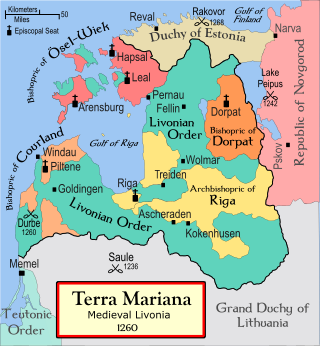
The Archbishopric of Riga was an archbishopric in Medieval Livonia, a subject to the Holy See. It was established in 1186 as the bishopric of Livonia at Ikšķile, then after moving to Riga it became the bishopric of Riga in 1202 and was elevated to an archbishopric in 1255.
Pope Clement II, was head of the Catholic Church and ruler of the Papal States from 25 December 1046 until his death in 1047. He was the first in a series of reform-minded popes from Germany. Suidger was the bishop of Bamberg. In 1046, he accompanied King Henry III of Germany, when at the request of laity and clergy of Rome, Henry went to Italy and summoned the Council of Sutri, which deposed Benedict IX and Sylvester III, and accepted the resignation of Gregory VI. Henry suggested Suidger as the next pope, and he was then elected, taking the name of Clement II. Clement then proceeded to crown Henry as emperor. Clement's brief tenure as pope saw the enactment of more stringent prohibitions against simony.
Year 1424 (MCDXXIV) was a leap year starting on Saturday of the Julian calendar.
Johannes Abezier, most usually known as Johann Abezier, was a Roman Catholic religious and political leader of the Teutonic Knights. Abezier was provost of Frauenburg in Warmia (1411), and afterward the Prince-Bishop of Warmia (1418).

The Diocese of Chur is a Latin Church ecclesiastical territory or diocese of the Catholic Church in Switzerland. It extends over the Swiss Cantons of Graubünden (Grisons), Schwyz, Glarus, Zurich, Nidwalden, Obwalden and Uri.
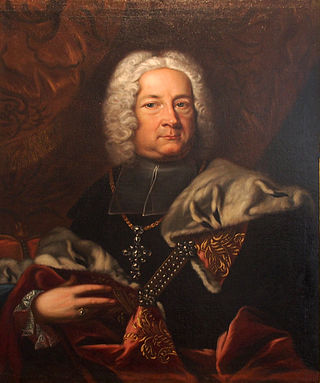
Friedrich Karl von Schönborn was the Prince-Bishop of Würzburg and Prince-Bishop of Bamberg from 1729 to 1746. He also served as Reichsvizekanzler (Vice-Chancellor) of the Holy Roman Empire from 1705 to 1734.

The Archdiocese of Bamberg is a diocese of the Roman Catholic Church in Bavaria and is one of 27 Roman Catholic dioceses in Germany. In 2015, 32.9% of the population identified as Catholic, and 15.6% of those reported that they attend Mass on Sunday; a relatively high number in Germany. The archdiocese comprises the majority of the administrative regions of Upper Franconia and Middle Franconia, as well as a small part of Lower Franconia and the Upper Palatinate. Its seat is Bamberg. The dioceses of Speyer, Eichstätt, and Würzburg are subordinate to it. The Diocese was founded in 1007 out of parts of the dioceses of Eichstätt and Würzburg. In 1817, the diocese was raised to an archdiocese.

Jens Grand, the Firebug was a Danish archbishop of Lund (1289–1302), titular Archbishop of Riga and Terra Mariana (1304–1310), and Prince-Archbishop of Bremen, known as the central figure of the second ecclesiastical struggle in Denmark in the late 13th century. He was an outstanding jurist of canon law.

Lupold of Bebenburg was the Bishop of Bamberg from 1353. He is best known for his political writings.
The Bishropic of Reval was a Latin Church ecclesiastical territory or diocese of the Catholic Church in Reval, Duchy of Estonia created by Valdemar II of Denmark in 1240. Contradictory to canon law, Valdemar II reserved the right to appoint the bishops of Reval to himself and his successor kings of Denmark. The decision to simply nominate the see of Reval was unique in the whole Catholic Church at the time and was disputed by bishops and the Pope. During the era, the election of bishops was never established in Reval and the royal rights to the bishopric and to nominate the bishops was even included in the treaty when the territories of the Duchy of Estonia were sold to Teutonic Order in 1346.

The Prince-Bishopric of Bamberg was an ecclesiastical State of the Holy Roman Empire. It goes back to the Roman Catholic Diocese of Bamberg established at the 1007 synod in Frankfurt, at the behest of King Henry II to further expand the spread of Christianity in the Franconian lands. The bishops obtained the status of Imperial immediacy about 1245 and ruled their estates as Prince-bishops until they were subsumed to the Electorate of Bavaria in the course of the German Mediatisation in 1802.
The Congress of Ems was a meeting set up by the four prince-archbishops of the Holy Roman Empire, and held in August 1786 at Bad Ems in the Electorate of Trier. Its object was to protest against papal interference in the exercise of episcopal powers, and to fix the future relations between the participating archbishops and the pope. Representatives of the three elector-archbishops: Friedrich Karl von Erthal of Mainz, Maximilian Franz of Cologne, Clemens Wenceslaus of Trier, as well as of Prince-Archbishop Hieronymus von Colloredo of Salzburg took part.
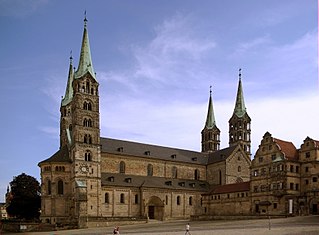
The Bamberg witch trials of 1627–1632, which took place in the self governing Catholic Prince-Bishopric of Bamberg in the Holy Roman Empire in present-day Germany, is one of the biggest mass trials and mass executions ever seen in Europe, and one of the biggest witch trials in history.

Walter Brandmüller is a German prelate of the Catholic Church, a cardinal since 2010. He was president of the Pontifical Committee for Historical Sciences from 1998 to 2009.

Johann Schweikhard von Kronberg was the Archbishop-Elector of Mainz from 1604 to 1626.
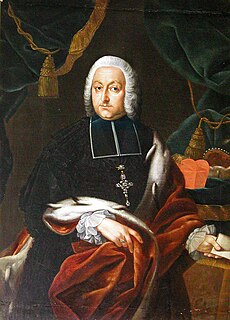
Johann Philipp Anton Freiherr von und zu Franckenstein, born in Forchheim on 27 March 1695, appointed in 1743 as Vicar-General of Mainz, was from 1746 to 1753 ruling Prince-bishop of Bamberg.
Louis of Meissen was a German nobleman from the House of Wettin. He was Bishop of Halberstadt and later Bishop of Bamberg, then Archbishop of Mainz and finally Archbishop of Magdeburg.
Georg Hesler (1427–1482) was a German Roman Catholic cardinal and bishop.
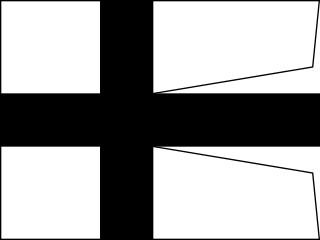
Terra Mariana was the official name for Medieval Livonia or Old Livonia. It was formed in the aftermath of the Livonian Crusade, and its territories were composed of present-day Estonia and Latvia. It was established on 2 February 1207, as a principality of the Holy Roman Empire, but lost this status in 1215 when Pope Innocent III proclaimed it as directly subject to the Holy See.
Peter von Schaumberg was Bishop of Augsburg in the 15th Century. A member of the nobility, he was studied at the Universities of Heidelberg and Bologna. The bishop was a skilled diplomat and negotiator.
References
- ↑ Wendehors, Alfred (1989). Das Stift Neumünster in Würzburg. Walter de Gruyter. p. 503. ISBN 3-11-012057-7.
- ↑ Bilmanis, Alfred (2007). Latvia as an Independent State. READ BOOKS. p. 67. ISBN 978-1-4067-2870-5.
- ↑ The History of the Baltic States By Kevin O'Connor; ISBN 0-313-32355-0; p. 23
- Allgemeine Deutsche Biographie: at Wikisource de:s:ADB:Johann VI. Ambundii
- Regesta Imperii, University of Giessen - online version